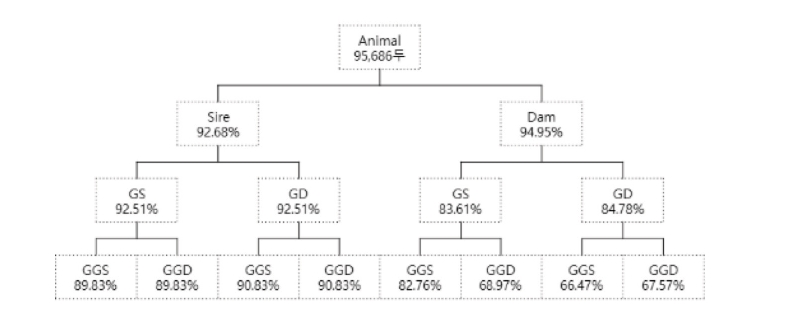Abstract
The objective of this study was to estimate the levels of inbreeding and to analyze the pedigree structure of the Hanwoo cattle population using pedigree records from bulls, cows and heifers registered from January 1990 to March 2017. Data used in this study obtained by National Agricultural Cooperative Federation from 98 farms were composed of 90,800 heads with 121,336 animals in pedigree. Analysis were carried out in whole dataset and a subset group composed of animals with fully identified ancestors when their pedigree structures were traced back up to third generations. The subset group was consist of 44,879 heads with 64,175 animals in pedigree. The percentages of parents, grandparents and great-grandparents known in whole dataset were 93.82%, 88.35% and 80.89%, respectively. Corresponding percentages in subset group were 99.88%, 77.67% and 70.79%, respectively. The average inbreeding coefficient in the whole dataset was 0.73% and ranges from 0.08 to 1.05%. In subset group, the average inbreeding coefficient was 0.40% and ranges from 0.04 to 0.53%. The average generation interval was 5.5 year and 5.1 year for whole and subset group, respectively. Effective population sizes, estimated from the increasing rate of inbreeding were 190 and 496 for whole and subset group, respectively. In conclusion, the results suggests that optimizing planned mating schemes is needed to control the rate of inbreeding. Moreover, effective population size should be increased to maintain genetic diversity in Hanwoo cattle population.
Figures & Tables

Fig 1. Pedigree completeness level in the whole pedigree data of Hanwoo population


